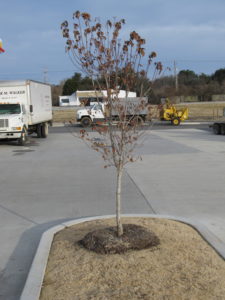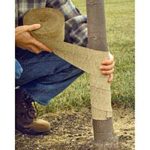Across the northern U.S. and Canada, cold temperatures can damage many plants. Wide fluctuations in temperature can be particularly detrimental to newly planted landscape and fruit trees from late fall to early spring. Street trees are particularly susceptible.
Sun scald is described by elongated, sunken, dried, or cracked areas of dead bark, usually on the south or southwest side of the tree. On cold winter days, the sun can heat up bark to the point where cambial activity is stimulated. At dusk or when the sun is blocked by a cloud, hill, or building, bark temperature drops rapidly, killing the active tissue
Young trees, newly planted trees, and thin-barked trees (cherry, ornamental plum, crabapple, honey locust, linden, maple, and mountain ash (Sorbus) are most susceptible to sun scald. Winter pruned trees that have had their lower shade branches removed, or have been transplanted from a shady to a sunny location are also susceptible to sun scald. Older trees are rarely injured by sun scald because their outer bark is thicker.
Sun scald can be prevented by wrapping the trunk with a commercial tree wrap or any other light-colored material. The wrap should reflect the sun and insulate the bark so temps do not wildly fluctuate. Spiral white plastic bands, available at many full service garden centers, also protect against deer and rabbit browsing (nibbling) on the bark. Wrapping 3-4 sheets of newspaper around the trunk also works. Over the first two years best management practice is to remove all wrappings in the spring and reinstall in the fall. Do not leave the wrap on longer than necessary because it could trap moisture and become a haven for pests.
Newly planted thin-barked species should be wrapped for their first two winters, but some may need covering for up to five winters, sometimes more.



 Posted in
Posted in 
